This is the most exciting part.
This Podcast discusses the power of activity in detail – Episode 8: Activity Snacking to Increase Time in Range for T1D
Finally, we are moving out of the SLOW lane where insulin resides. We are changing gear and getting in the FAST lane. Get your running shoes on, it’s time to talk about activity and exercise.
Let’s recap on just how SLOW fast-acting insulin corrections are in bringing down a high glucose level.
It takes three hours to get back into target (under 10.0mmol/L or 180mg/dL), and four hours to reach 5.5mmol/L (100mg/dL).
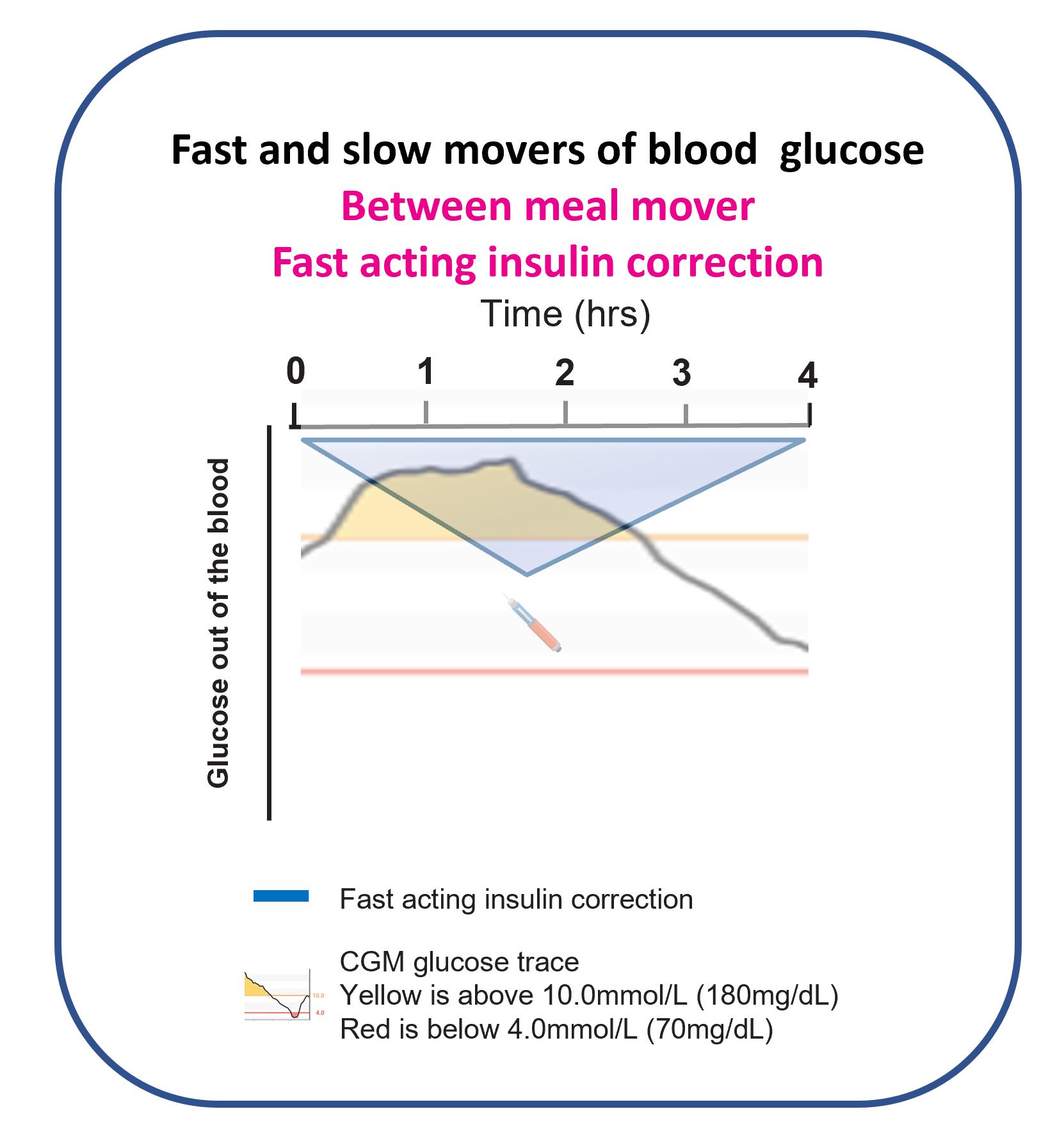
Compared to fast-acting insulin corrections, how fast does exercise drop the glucose level?
Ready for it?
Six times faster!
This picture shows that a ten-minute burst of exercise starts to work immediately. By ten minutes, the glucose is dropping, and after half an hour, the glucose is back in target.
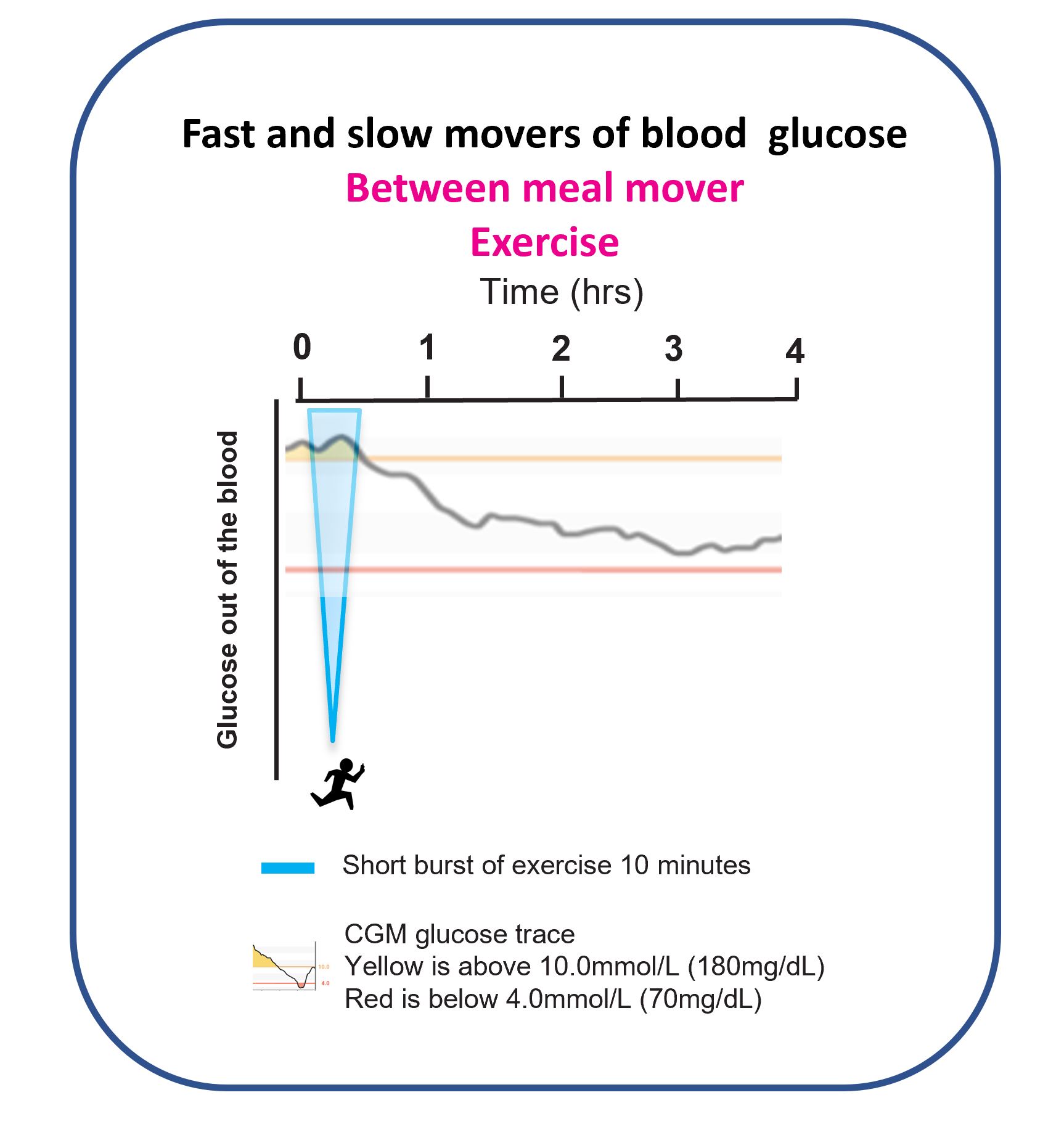
It keeps getting better. The picture shows that after thirty minutes, the effect of exercise is almost completely gone. This means you can safely do another short burst of exercise if needed without fear of crashing hypos.
Remember what happened to me on Christmas day 2018 after stacking all those corrections? Hypo city!
I made sure 2019 was different. Out with the SLOW insulin corrections, in with the FAST short bursts of exercise. How did it go?
I write war and peace on this in the Dynamic Glucose Management section, but this picture tells all!
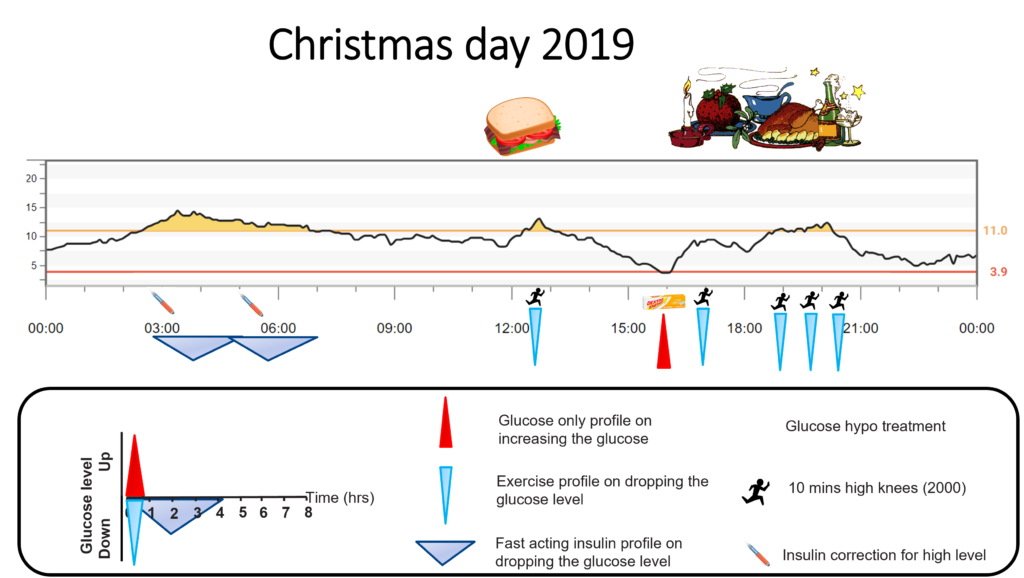
I must have convinced you that using short bursts of exercise between meals to lower glucose is worth exploring.
How does exercise drop the glucose level between meals so FAST?
The explanation 99% of health care professionals will give you is:
Exercise opens side doors to the muscle and fat cells that do not require insulin.
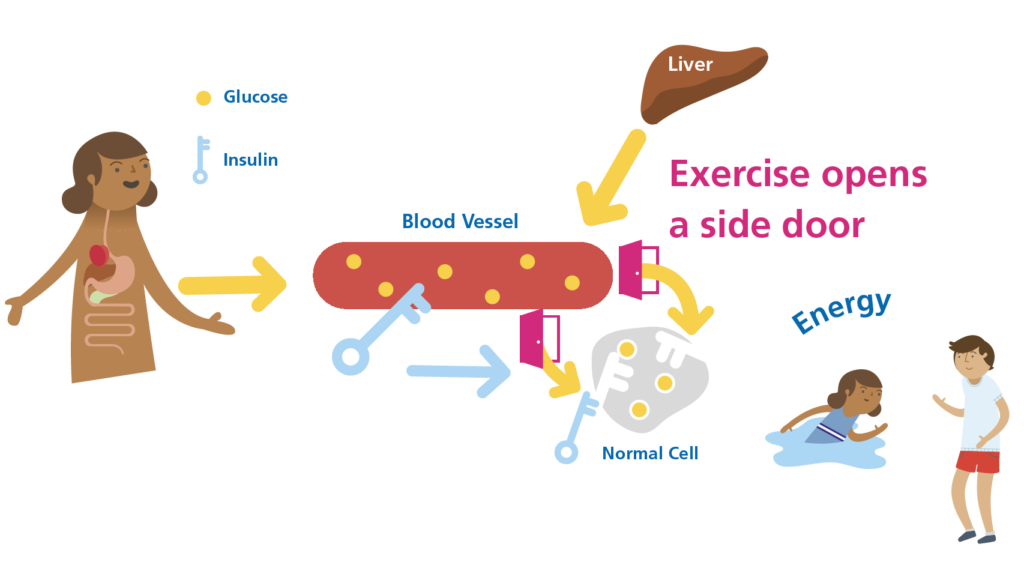
They are 100% correct, this does happen.
However, its not the only explanation, and its not the most powerful. What is it, you ask?
Speed of blood flow to the muscles.
As you start to exercise, the blood is diverted from the digestive tract to the muscles. The heart beats faster, the blood is pumped to the arms and legs, and the insulin is delivered in vast quantities to the muscle cells.
Result?
Glucose is dragged kicking and screaming out of the blood into the muscle cells to create energy. This is how exercise makes insulin stronger.
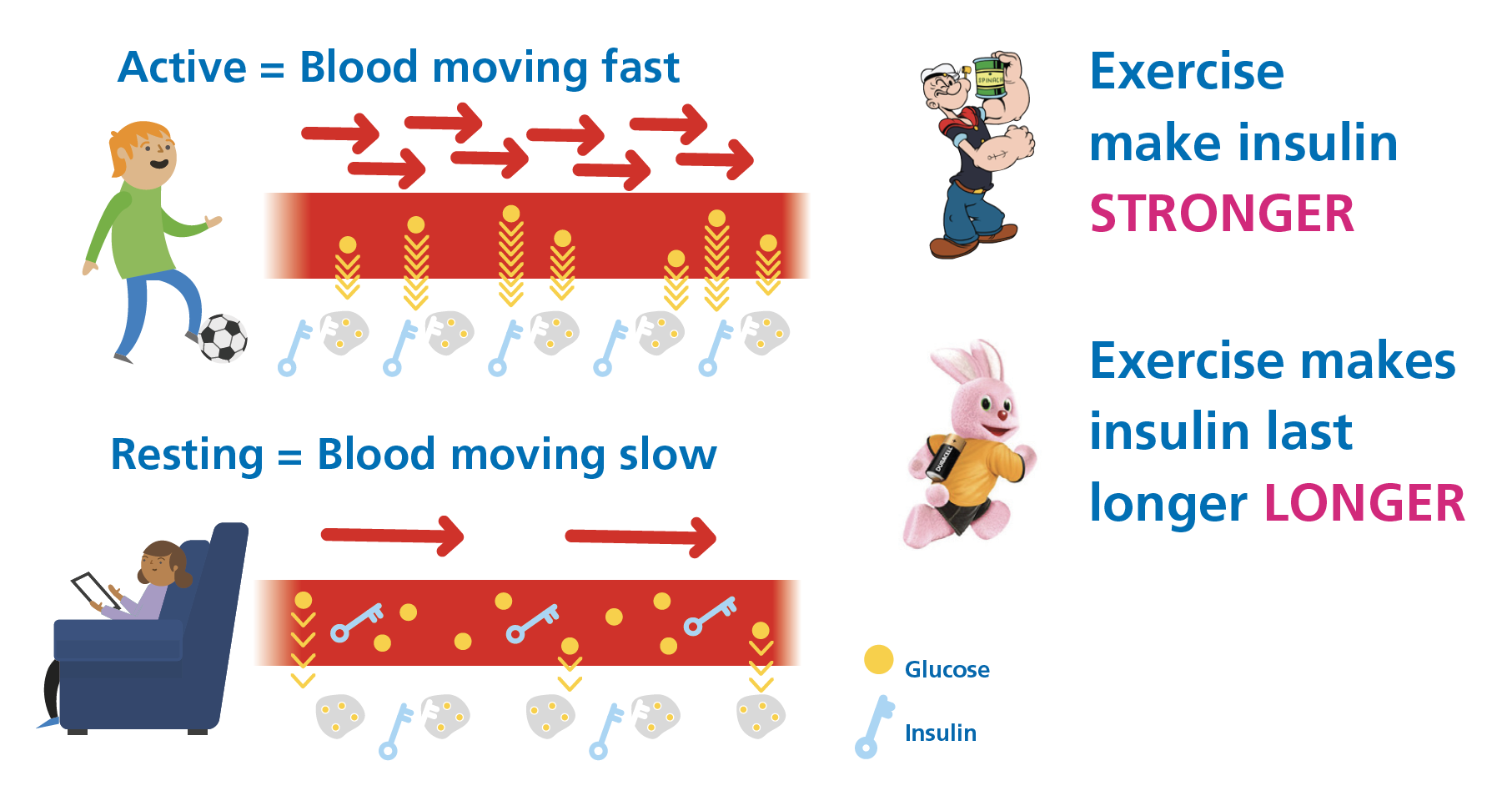
As an added bonus, exercise also makes insulin last longer, so you do not need as much of it.
Why is this is a good thing?
Having high circulating levels of insulin in the blood increases the risk of cardiovascular problems. Therefore, any reduction in daily insulin requirements benefits your heart and brain.
How does exercise make insulin last longer?
Insulin is broken down by the liver and kidneys, not the muscle cells. Therefore, by diverting the blood to the muscles and away from the liver and kidneys, insulin is broken down more slowly. This means the muscle cells can re-use insulin keys two times instead of only once.
Is moderate activity as FAST as exercise in dropping the glucose level?
As you might have guessed, no.
Moderate activities such as walking, gardening, and playing have a milder effect. This graphic shows how 10-15 minutes of moderate activity takes half an hour to kick in, and by an hour, the glucose is just back in target. Also, the total glucose drop is much less.
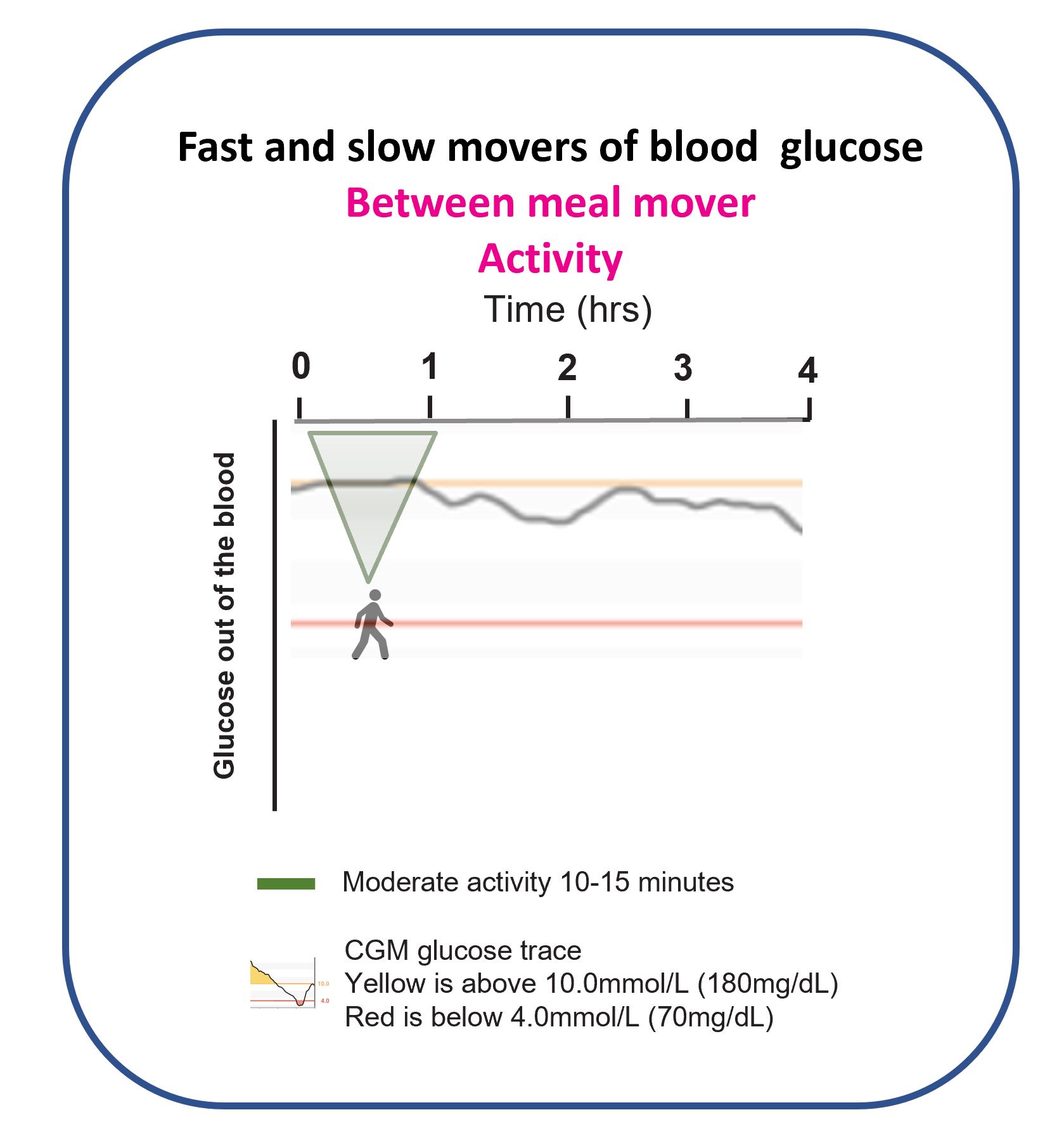
Grace and Jude, you will not always need a sledgehammer; sometimes, a claw hammer will do. I will teach you when to exercise and when moderate activity will do in Dynamic Glucose Management.
What about managing long walks and sports not done to correct high levels?
You’re right. We have only talked about the amazing potential of activity and exercise to drop a high glucose level FAST!
What about doing long walks, playing football, running a 10k, or hitting the gym?
Well, that requires a whole section called Exercise.
You are now aware that activity and exercise drop the glucose level. You can guess the management will involve a combination of reducing insulin and supplementing with extra glucose.
There are a couple more things to consider.
- Glucose level dropping long after exercise finishes, if it’s 45 minutes or more.
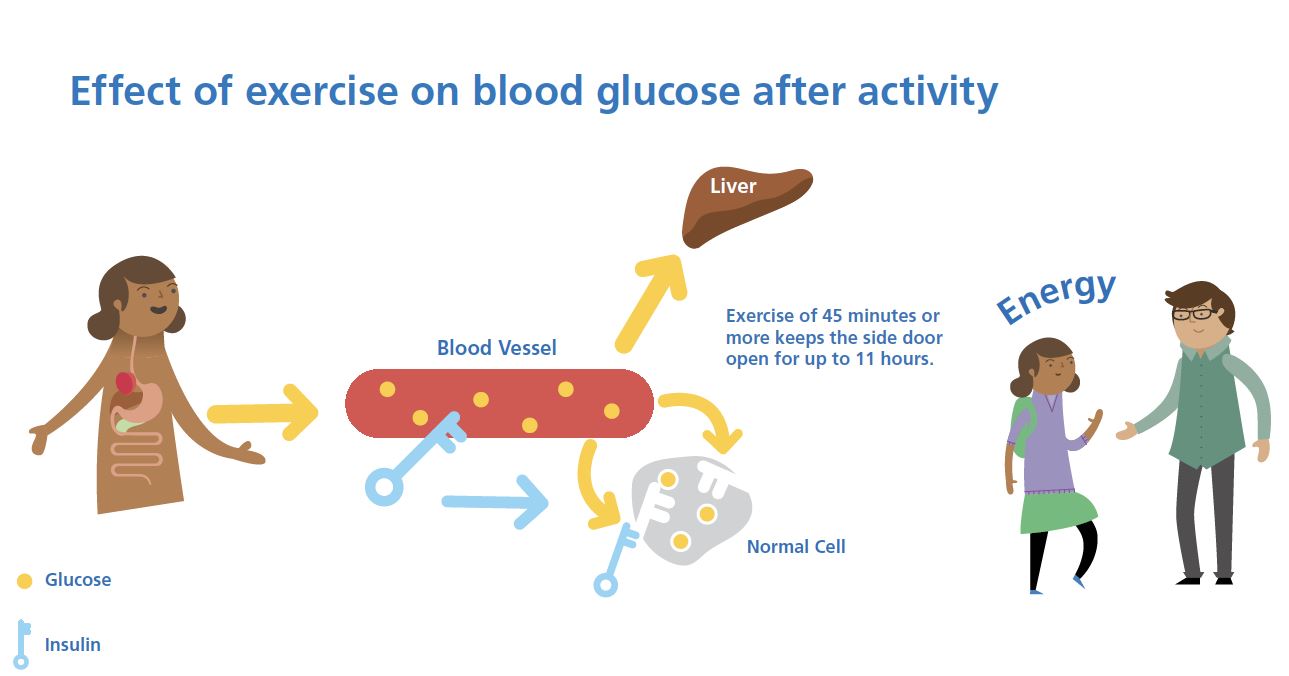
- Glucose level spiking during and after very high-intensity activity.
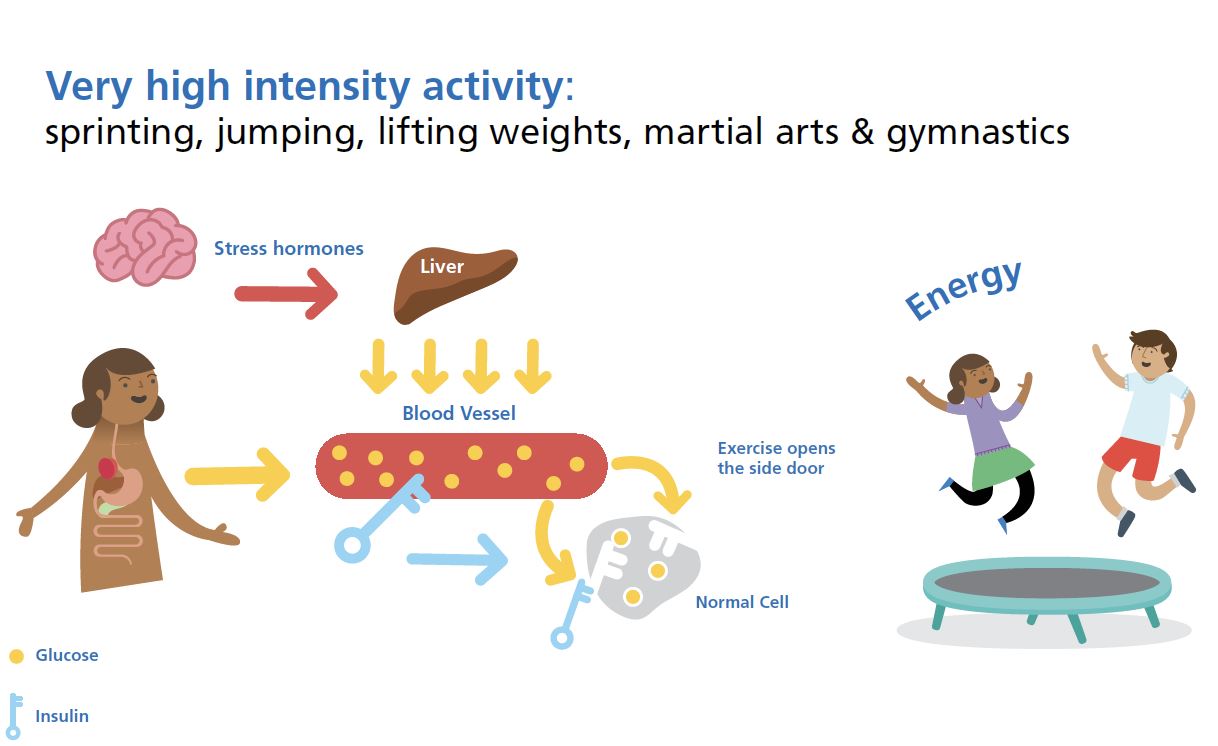
Grace and Jude, you do not need the Exercise section yet.
Next Step. Hypoglycaemia.
